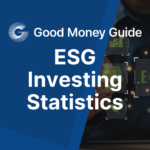In this guide, we look at some top tips for making more money with an investment ISA including the best stocks to hold, performance, contributions, fees, regular investing and what to buy.
How can you make more money in a stocks and shares ISA?
There are two main ways to improve the performance of your stocks & shares ISA.
1. Take more risk
The first way is to invest in better underlying investments. This is easier said than done, however. No one knows how an investment will perform in the future and past performance is not an indicator of future performance. That said, if you have a managed ISA and it has consistently underperformed other managed ISA products in the past, it may be worth transferring it to another provider.
We’ve ranked these asset classes in terms of risk/reward:
- US stocks – a high-growth market with good longterm capital growth prospects
- UK stocks – an established market with lots of growth and income paying stocks
- Funds – diverse portfolios of stocks and assets
- Bonds – receive a steady stream of income from dividends
- Cash – zero risk as long as the interest rate you receive is higher than inflation
The disadvantage of taking more risk, is that whilst you can potentially profit more, there is also a higher chance that you will lose money. So if you are worried about that possibility, it’s better to focus more on less risky investments or even cash for no risk. But if you do choose cash, make sure you open an ISA that offers high interest rates.
2. Pay less
The second way is to reduce fees. Over time, fees can have a large negative impact on investment returns. It’s important to ensure that the fees you are paying are reasonable. You can compare the costs of some of the best ISA accounts in the table below:
| Investment ISA | ISA Annual Fees | DIY or Managed | Transfer Offer | Customer Rating | More Info |
|---|---|---|---|---|---|
 | £96 | Both | Cash Back | (Based on 678 reviews)
| See Offer* Capital at risk |
 | £59.88 | Both | Free Trades | (Based on 1,119 reviews)
| See Offer Capital at risk |
 | 0.25% - 0% | Both | Bonus | (Based on 1,616 reviews)
| See Offers Capital at risk |
 | 0% | DIY | ❌ | (Based on 275 reviews)
| See Offer Capital at risk |
 | 0.6% | Managed | Cash Back | (Based on 2,564 reviews)
| See Offer Capital at risk |
 | £0 | Both | ❌ | (Based on 934 reviews)
| See Offer Capital at risk |
 | 0.75% - 0% | Both | ❌ | (Based on 235 reviews)
| See Offer Capital at risk |
 | 0.25% - 0% | DIY | Fees Paid | (Based on 1,094 reviews)
| See Offer Capital at risk |
 | 0.45%- 0% | DIY | Cash Back | (Based on 1,759 reviews)
| See Offer Capital at risk |
 | 0.12% | DIY | Cash Boost | (Based on 73 reviews)
| See Offer Capital at risk |
 | 0.15% | Both | ❌ | (Based on 38 reviews)
| See Offer Capital at risk |
How do I choose what shares to buy for an investment ISA?
Historically, shares have delivered excellent long-term returns for investors. Over the long run, UK shares have returned around 5% per year in real terms (i.e. above inflation), according to the Barclays Equity Gilt study. That compares to around 1.3% for UK government bonds and around 0.7% for cash. US shares have performed even better. Since 1926, the main US stock market index, the S&P 500, has returned about 10% per year.
It’s important to understand, however, that not every stock has performed this well. To obtain these kinds of returns from the stock market, you need to own a whole portfolio of shares. It’s also important to understand that shares do not rise in a straight line. In the short term, share prices move up and down. To generate good returns from shares, you generally need to invest for the long term.
When choosing shares to invest in, there are a number of things to consider including:
- The company’s growth prospects – Companies that grow substantially over time tend to be good investments.
- The company’s level of profitability – Companies that are highly profitable tend to be good investments over the long run. Companies that are not profitable are generally higher-risk from an investment point of view.
- The company’s balance sheet – Companies that have weak balance sheets tend to be higher-risk investments.
- The company’s dividend track record – Companies that consistently increase their dividend payouts tend to be good long-term investments.
- The company’s valuation – Companies that have very high valuations tend to be higher-risk investments.
It’s important to think about your financial goals and risk tolerance when choosing stocks for your ISA. If your risk tolerance is low, it’s sensible to invest in lower-risk, dividend-paying shares. If your risk tolerance is high, you may want to allocate some capital to higher-growth shares. It’s important to remember that, in investing, risk is directly related to return. The higher the potential return on offer, the higher the risk.
You can sell and rebuy shares in an ISA, normally without affecting your annual ISA allowance. However, you do need to check with your ISA provider to ensure that this is definitely the case.
- Further reading: How to buy shares.
What are the most popular shares in stocks and shares ISAs
- Lloyds Bank tops list of the most popular buys in HL Stocks and Shares ISAs in January last year.
- Retail investors are riding the AI wave, investing in Nvidia, Microsoft and AMD.
- Defence company, BAE Systems has been in demand amid geopolitical tensions.
- Surge in price of uranium sparks enthusiasm for Yellow Cake.
- Glencore remains popular as investors eye up its role in the green transition.
- Investors focus on oil prices with BP making the top ten of most popular picks in ISAs.
- Bargain hunters snap up shares which have been hit by losses this month, with enthusiasm for JD Sports.
You can also read our guide on what shares ISA millionaires have in their portfolio.
Should you make regular ISA investments?
There are many different approaches to investment, but a popular method of reducing risk is to drip feed money into an ISA over the course of a year.
This ensures that the investor is protected against drops in the value of the equities.
For example, if £5,000 is invested in a fund in March and it drops in value by 20%, then the investor will be left with £4,000. A drip feeder would buy £2,500 in March, which would be worth £2,000 in April, and could then buy a further £2,500 at the lower price.
This would leave the investor with £4,500 and a larger stake in the fund than the non-drip feeding example.
How do you reduce the risk of losing money in a stocks and shares ISA?
Investing within a stocks & shares ISA involves risk. However, there are a number of ways you can reduce the investment risk within your ISA.
One way is to invest in lower-risk investments. These kinds of investments are available on both managed and DIY ISA platforms. Wealthify, for example, offers a ‘Cautious’ plan. Meanwhile, Hargreaves Lansdown offers access to many lower-risk funds.
Another way to reduce investment risk is to diversify your portfolio so that it contains a mix of different assets. This will help reduce overall portfolio risk.
It’s worth noting that if your ISA provider is regulated by the FCA, you will be covered by the Financial Services Compensation Scheme (FSCS) if the provider fails (up to £85,000). The FSCS does not cover regular investment losses, however.
How can you track the performance of an investment ISA?
By logging into your ISA account you can view the performance of each underlying investment and the overall performance of your portfolio.
Providers offer charts showing how your portfolio has performed over time. This will include a mix of deposits you have made, as well as how your investments in the ISA have performed.
Here is an example of how Wealthify displays performance. You can see the regular contributions of £100, as the chart gaps up, followed by how the market has performed between jumps.

What happens to the money in my stocks and shares ISA when I die?
If you die, money and investments held within your stocks & shares ISA will be passed on to your beneficiaries.
After your death, your stocks & shares ISA will retain its tax benefits until one of the following things happens:
- The administration of your estate is completed
- The stocks & shares ISA is closed by your estate executor
If neither of these things happen within three years and one day of your death, your ISA provider will close your account.
In your will, you can leave your ISA to whoever you like. If you have a spouse or civil partner, they can inherit your ISA’s tax-free status as a one-off boost to their own ISA allowance.

Richard is the founder of the Good Money Guide (formerly Good Broker Guide), one of the original investment comparison sites established in 2015. With a career spanning two decades as a broker, he brings extensive expertise and knowledge to the financial landscape.
Having worked as a broker at Investors Intelligence and a multi-asset derivatives broker at MF Global (Man Financial), Richard has acquired substantial experience in the industry. His career began as a private client stockbroker at Walker Crips and Phillip Securities (now King and Shaxson), following internships on the NYMEX oil trading floor in New York and London IPE in 2001 and 2000.
Richard’s contributions and expertise have been recognized by respected publications such as The Sunday Times, BusinessInsider, Yahoo Finance, BusinessNews.org.uk, Master Investor, Wealth Briefing, iNews, and The FT, among many others.
Under Richard’s leadership, the Good Money Guide has evolved into a valuable destination for comprehensive information and expert guidance, specialising in trading, investment, and currency exchange. His commitment to delivering high-quality insights has solidified the Good Money Guide’s standing as a well-respected resource for both customers and industry colleagues.
To contact Richard, please ask a question in our financial discussion forum.




